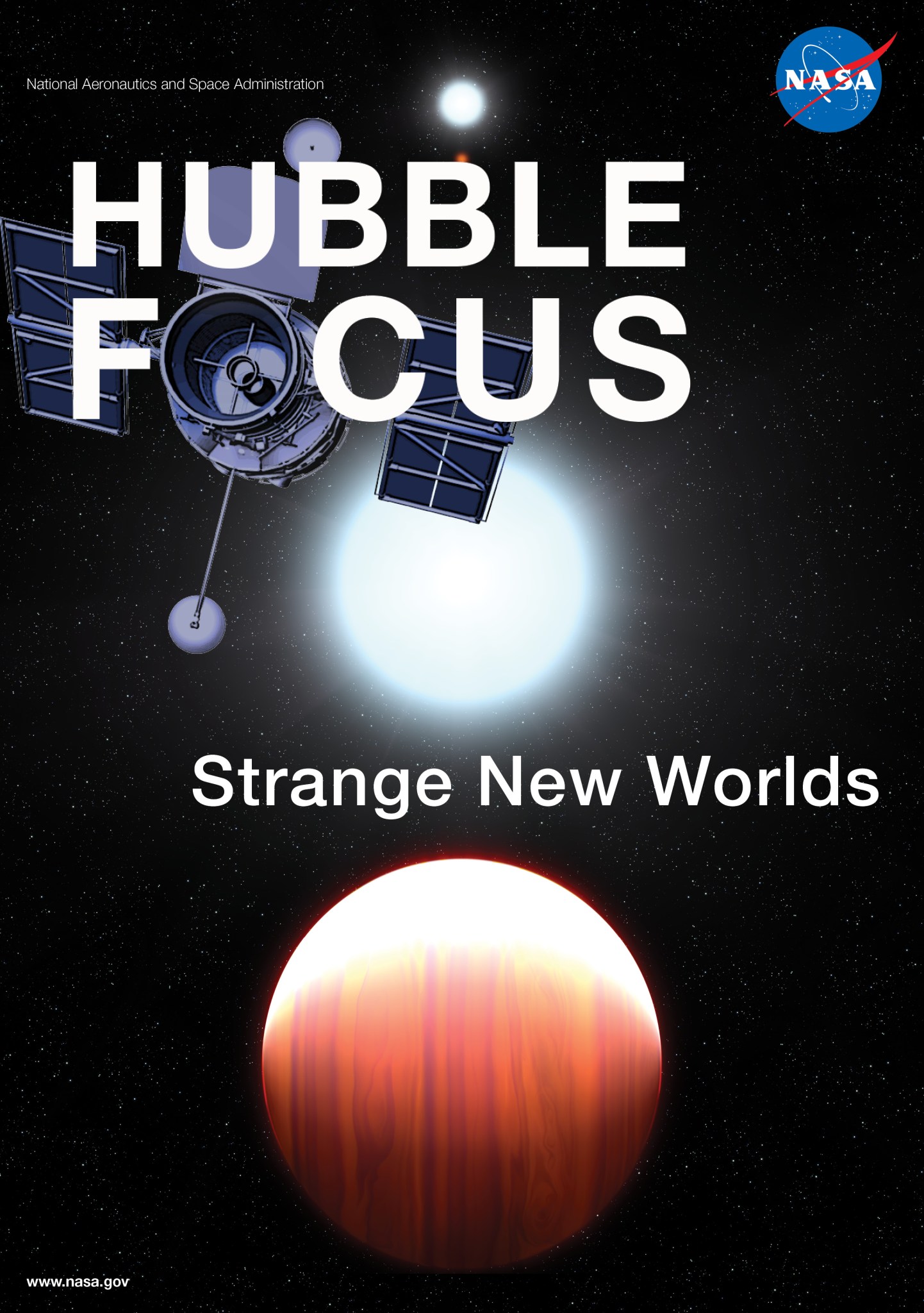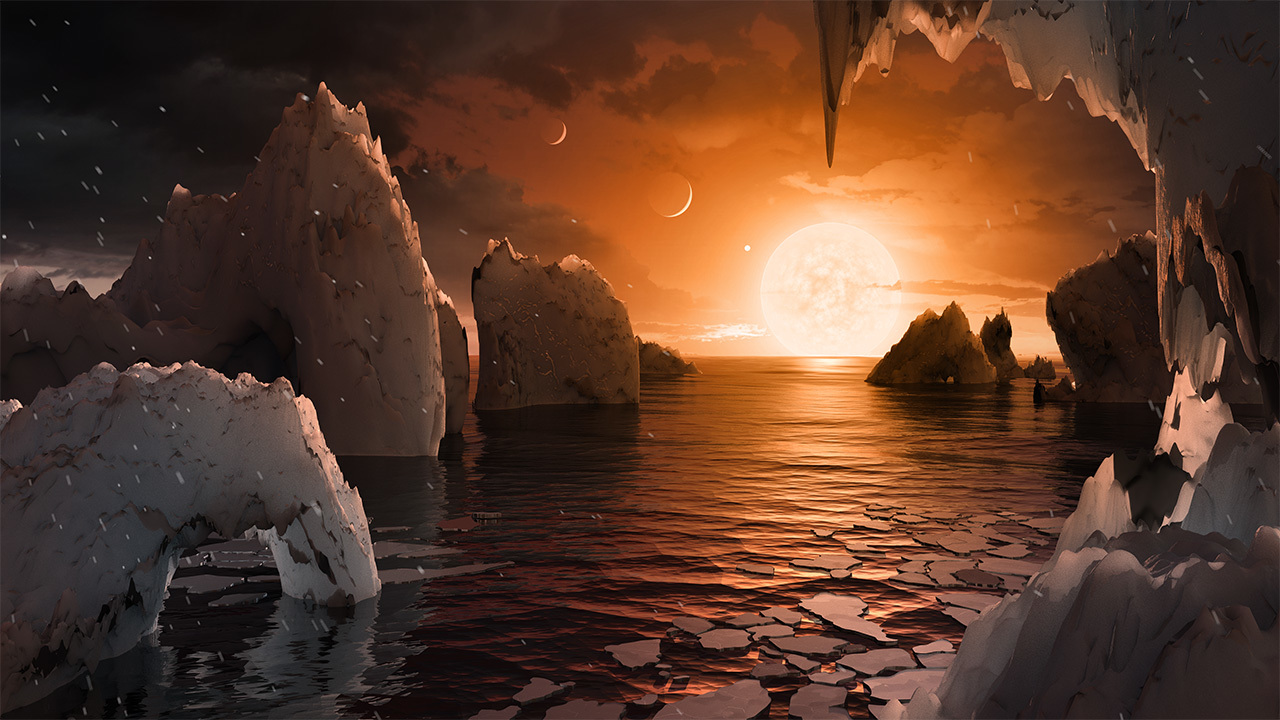NASA’s Hubble Space Telescope team has released a new edition in the Hubble Focus e-book series, called “Hubble Focus: Strange New Worlds.” This e-book highlights the mission’s recent discoveries about worlds outside our solar system, known as exoplanets.

Download:
“The Hubble Space Telescope is once again opening our eyes to an incredible universe, this time to the nature of alien worlds,” said Jennifer Wiseman, NASA’s Hubble senior project scientist. “These are impressive achievements when we consider that when Hubble was designed and launched, no exoplanets had yet been discovered.”
Weird Worlds and Other Earths
For thousands of years, people believed Earth was fixed at the center of the universe and that every other celestial object revolved around our planet. But over time, it became clear that Earth did not occupy such a special position. People began to see that perhaps Earth was not as unique as they thought. Some even wondered if there might be planets circling other stars.
To date, astronomers have found more than 5,000 exoplanets. While astronomers initially expected to find systems similar to ours, most of the first exoplanets they discovered were wild and exotic compared to our solar system. Hubble’s exoplanet studies continue to help broaden our view of planetary systems by revealing even more oddballs, often by investigating the chemistry of their atmospheres via spectroscopy – the study of the information coded in light.
Hubble’s spectroscopic observations have unveiled withering worlds that dwindle as they lose their atmospheres to space, and planets in bizarre orbits. But the observatory has also revealed worlds that are more similar to our own. Hubble has studied exoplanets’ atmospheres and found several that contain water vapor – an essential ingredient for life as we know it. Some of these worlds even orbit within their star’s habitable zone, which is the range of orbital distances where temperatures are mild enough that liquid water could pool on planetary surfaces. “Hubble has provided us with a wealth of information on the variety that exists among exoplanets, probing the composition of their atmospheres and discovering exotic weather seen nowhere on Earth or even elsewhere in our solar system,” said Ken Carpenter, Hubble’s operations project scientist based at NASA Goddard Space Flight Center. “It has also carried out an extremely critical exploration of relationship between these exoplanets and their host stars and how it drives conditions on the planetary surfaces that influence their habitability. Hubble has shown us that even stars unlike our Sun may harbor habitable worlds and thus broadened our search for life elsewhere in the galaxy.”
Alien Weather and Stellar Relationships
Earth exhibits a wide range of weather, from rolling thunderstorms to sunny skies to blizzards. Thanks to Hubble, astronomers have learned about the weather some exoplanets experience, including molten iron rain, amber skies, and even sunscreen-like snow flurries. Future observations could reveal more information about what drives exoplanets’ weather, including their relationships with their host stars.
If our own host star, the Sun, were just a little hotter or colder, or if it were much older or younger, Earth might not be habitable. Hubble has helped astronomers explore other planet-star relationships, offering clues to how they may evolve and informing our search for habitable worlds. The observatory has even revealed a world with two suns and studied different types of stars to explore which are most conducive to life.
While Sun-like stars may be the most obvious targets to search for habitable planets, Hubble revealed that orange dwarfs – smaller and cooler than our yellow-white Sun, but larger and hotter than red dwarfs – could offer better chances. These stars are not too hot, too cool, or too violent to host life-friendly planets over vast stretches of cosmic time. Hubble’s future observations will continue to help us focus our search for habitable worlds, bringing us ever closer to the possibility of finding life on other planets.
Disk Dwellers
New stars form in the Milky Way from swirling clouds of gas and dust that are peppered throughout our galaxy. Vestiges of those clouds remain, surrounding each star in a disk that grows ever more diffuse as debris clumps together to form objects like planets. Hubble’s exoplanet studies have largely focused on the planets themselves, but occasionally surprises pop up in the disks in which these planets are embedded.
Hubble has seen an eerie shadow sweep across a star’s surrounding disk, studied comets a planet’s gravity is hurling into its star, and watched a growing planet gobble up material. The observatory has even offered clues about the mystery of why so few planets between the sizes of Earth and Neptune exist. Hubble will continue to reveal new information about the worlds that grace our galaxy for years to come, providing hints about our own solar system’s formation and evolution along the way.
As the fourth edition of the series, this e-book builds on the wealth of information shared in previous renditions, which focused on the solar system, stars, and galaxies. Upcoming editions will zoom in on other cosmic topics, such as dark matter and dark energy – two invisible cosmic mysteries that make up the majority of our universe.
The new e-book is compatible with most electronic devices and can be downloaded in multiple formats for free from:
https://science.nasa.gov/mission/hubble/multimedia/e-books
For more information about Hubble, visit:




























